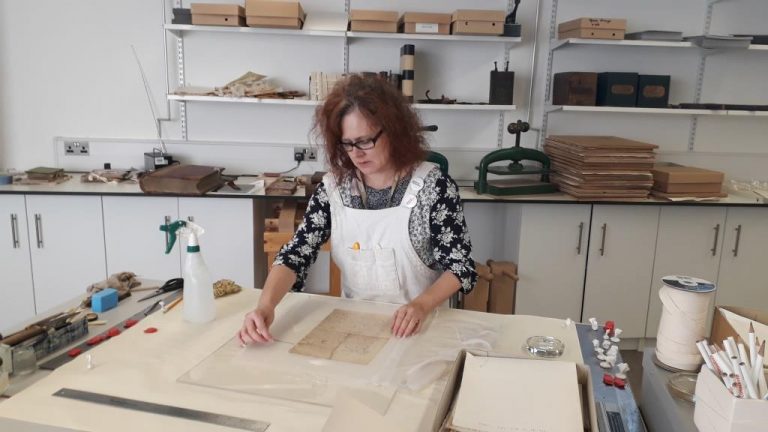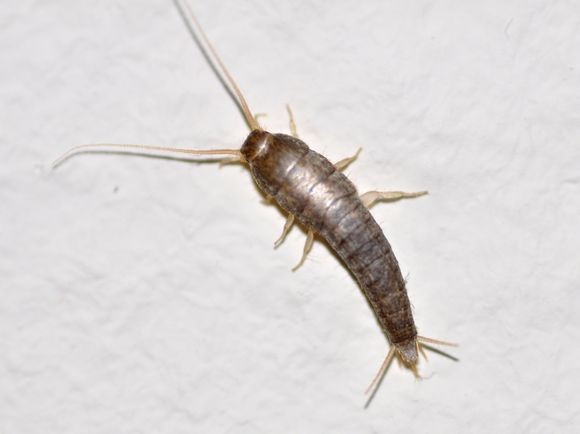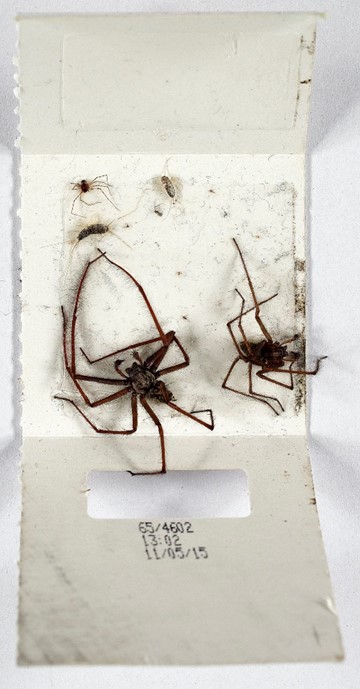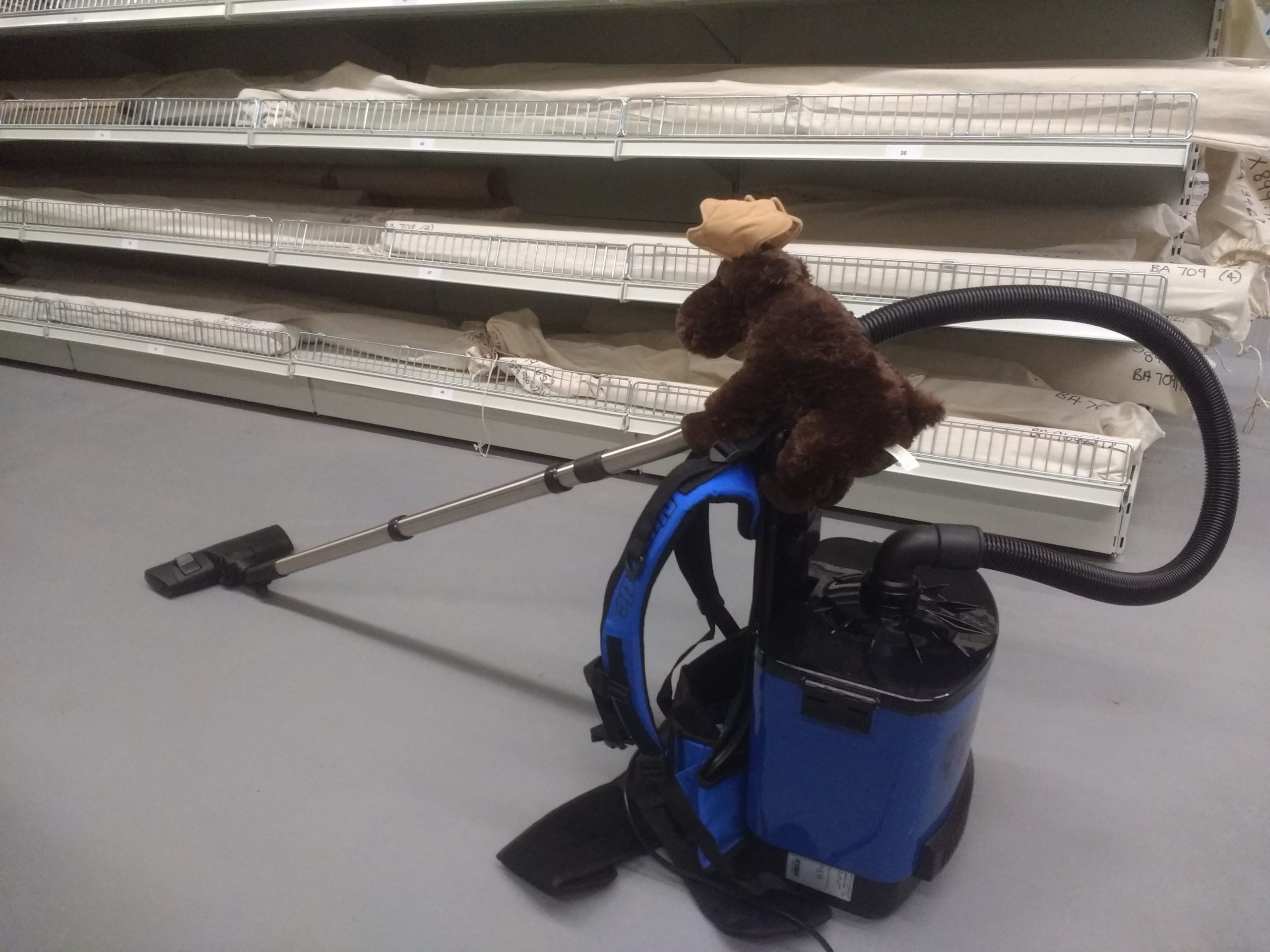Bug Busting!
- 30th January 2021
On #BugBustingDay Rhonda, our conservator, shares about this aspect of her role.
When I tell people I’ve just met that I am a Conservator, their usual response (after I’ve explained that I repair and stabilise books and paper so they can be handled and read without the danger of them falling apart) is to say that I must have a very interesting job. I certainly do get to work on some amazingly old, rare and valuable items, some of which are so delicate, I may have been the only person to actually touch them in many years.

Rhonda working in the conservation room
But the less glamorous side of my job is that I also get to catch and count some of the creepy crawlies that are hiding out in the depths of our strongrooms. Even though our strongrooms are maintained at temperatures of around 16oC, they can provide places for insects such as silverfish to hide and survive, especially in dark and undisturbed areas.
Silverfish are a type of primitive wingless insect, usually silver grey in colour which move in a fish-like way, giving rise to their common name. They feed on the starch and cellulose in paper, ‘grazing’ over the surface of the paper with rasping teeth, much like a snail through the garden. Although (reasonably) small in size (10-25mm), one hungry silverfish can do a lot of damage. With so much of our collections being paper based, silverfish and archives are never a good mix.

Image courtesy of British Library showing irregular holes in paper and ragged, scraped surface characteristic of silverfish damage.
In order to know if we have a problem with silverfish or other insect pests, I need to know what’s hanging out in the strongrooms when I’m not. So I place what are called ‘sticky blunder traps’ on the floors of the strongrooms which I check and replace every three months. These are basically strips of adhesive tape so any insect that stumbles into it becomes stuck to the tape, allowing me to see just what insect pests I’m up against. Then I can count and measure the insects to determine if numbers are going up and are likely to cause a problem, or if regular cleaning in the strongrooms will prevent insects becoming a problem.

Adult silverfish. Image courtesy of British Library

Bug trap from strongroom corridor; removed 12 Aug 2016
Even though finding them can be alarming, spiders aren’t usually an archival problem as they don’t eat books and paper, but can indicate that other pests are present, as the spiders have to be eating something. It’s not always easy to remind myself of this when I come across a large one though!
Rhonda, as well as conserving our documents and helping keep our collections safe, also does work for individuals, and other museums and archives. Please get in touch if you would like to talk about how she could help you. You can also help support the conservation of the archives by Adopting a Document.

Monty the Moose using one of our backpack vacuum cleaners as he lends us a hand keeping the strongrooms clean
Post a Comment